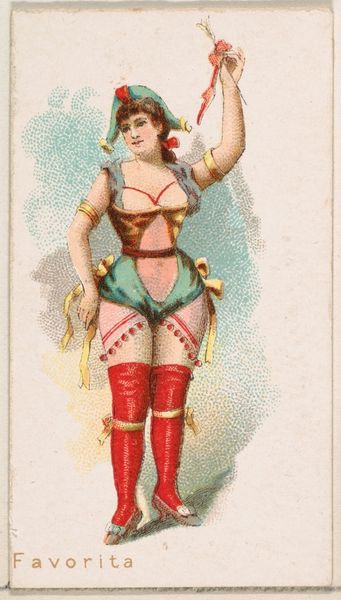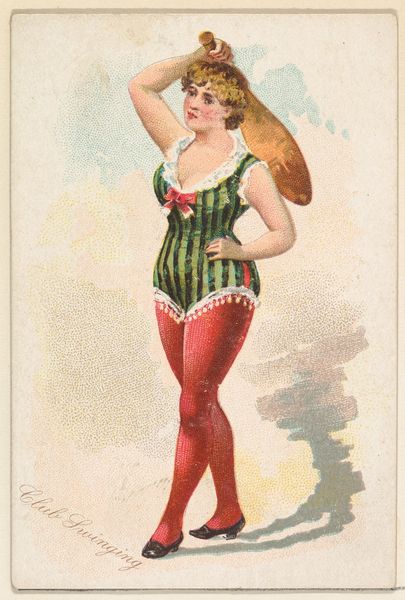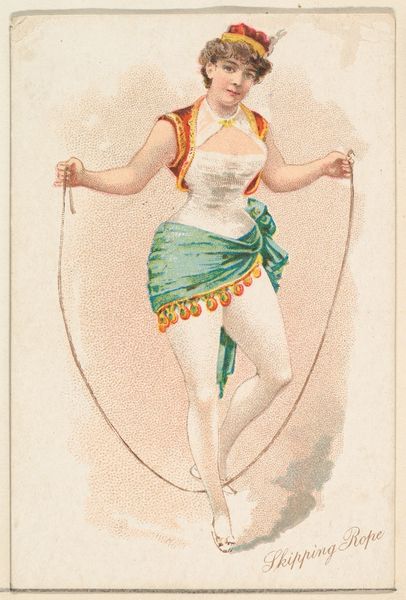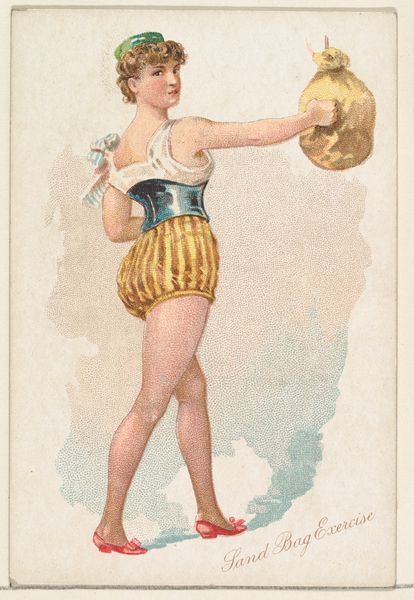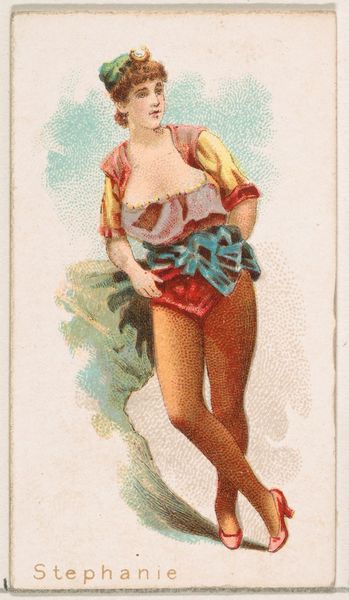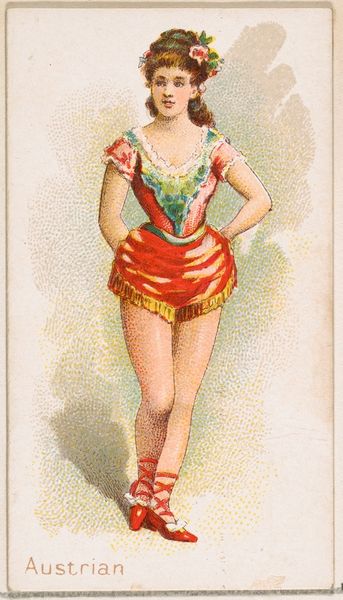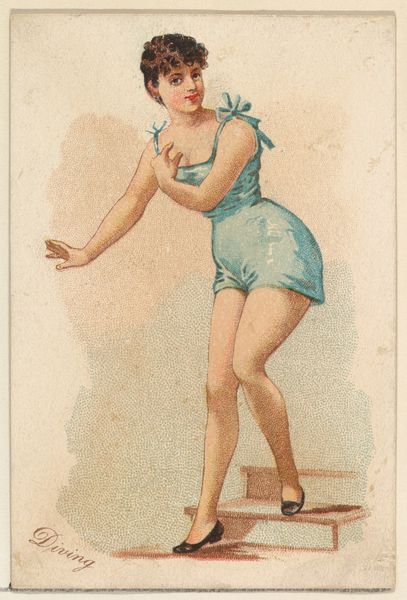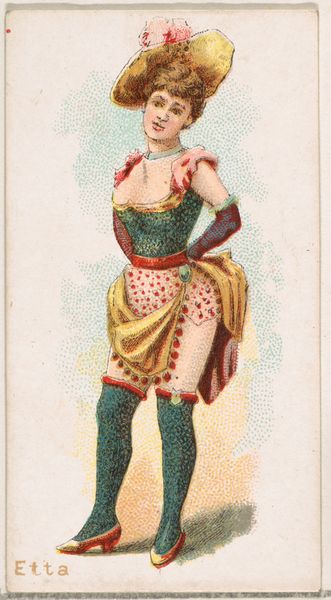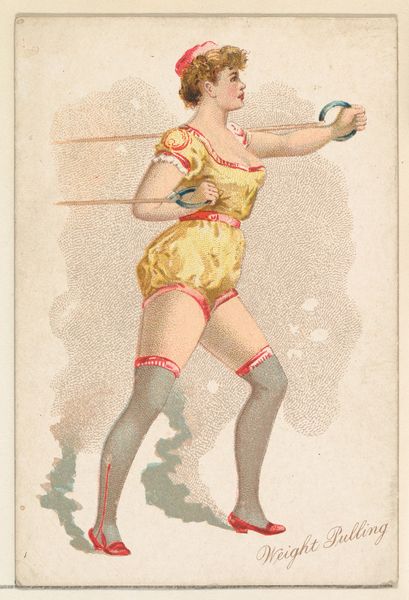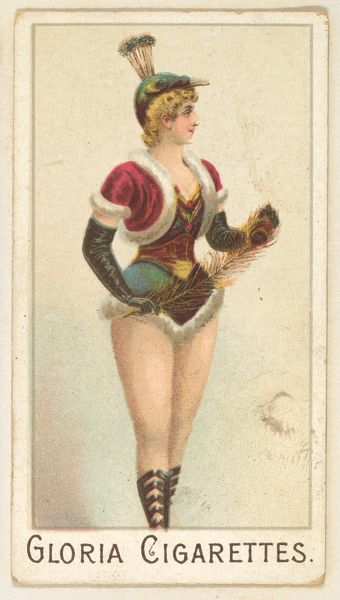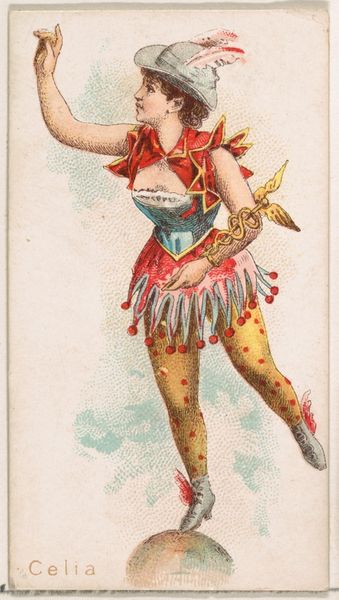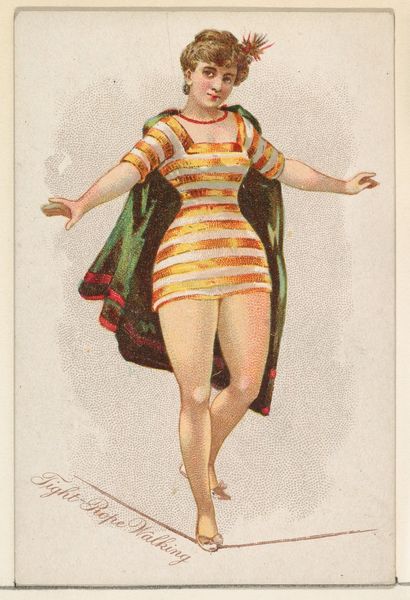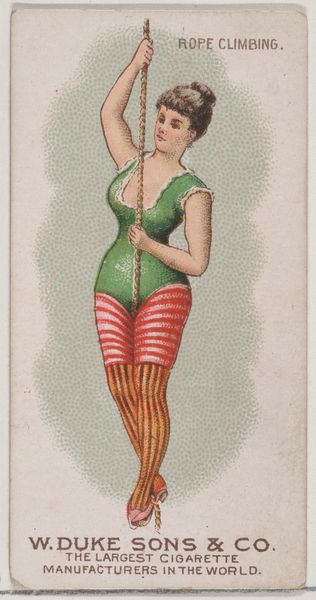
Swinging Rings Exercise, from the Pretty Athletes series (N196) issued by Wm. S. Kimball & Co. 1889
0:00
0:00
drawing, print
#
portrait
#
drawing
# print
#
figuration
Dimensions: Sheet: 3 3/4 × 2 1/2 in. (9.5 × 6.3 cm)
Copyright: Public Domain
Curator: I find this chromolithograph incredibly charming. Created around 1889 by Wm. S. Kimball & Co., this print titled "Swinging Rings Exercise," belongs to the Pretty Athletes series. Editor: It's oddly staged. There's an immediate sense of constructed femininity. The rosy palette, the ruffled trim of the athletic costume – it all feels quite deliberate, if not slightly absurd. Curator: Precisely! The print functions on the interplay of line and colour. Observe how the curvilinear figure of the athlete, clad in form-fitting attire, juxtaposes against the right angle and rectilinear dimensions of the paper medium. Note too how the chromatic range is not necessarily realistic, but communicates something of that era's perception of 'feminine health'. Editor: That's an interesting point. Kimball was, after all, a tobacco company, not an atelier pumping out aesthetic innovation. This "Pretty Athlete" isn’t about genuine athleticism, but rather a manufactured ideal—a byproduct marketed alongside cigarettes. The ruffles are like decoration – excess produced for sale. Curator: But within that construction, you cannot dismiss the artistry. The figuration here is crucial; the athlete's determined expression is effectively portrayed using subtle drawing techniques. The medium, a chromolithograph, also reflects the time's emphasis on mass reproduction, and thus accessibility, in art. It democratizes the "athlete" trope, presenting it in a format consumable by the masses. Editor: Yes, chromolithography aided that consumerism, offering an affordable reproduction process for wider dissemination. However, consider the materials – the paper, the inks – and the labour involved in their production and distribution. Who made the paper? Who mixed the inks? The artwork stands at the convergence of material realities and societal values. It reminds me more of labour and commodification, more than pure representation. Curator: Both perspectives, of course, deepen our comprehension. We observe the artist's intent and also the conditions that permitted that very artistic creation. Editor: Indeed. Seeing through the lens of production sheds new light on these “pretty athletes”. The print acts as a visual shorthand, an item representative of social norms embedded in industrial processes.
Comments
No comments
Be the first to comment and join the conversation on the ultimate creative platform.
